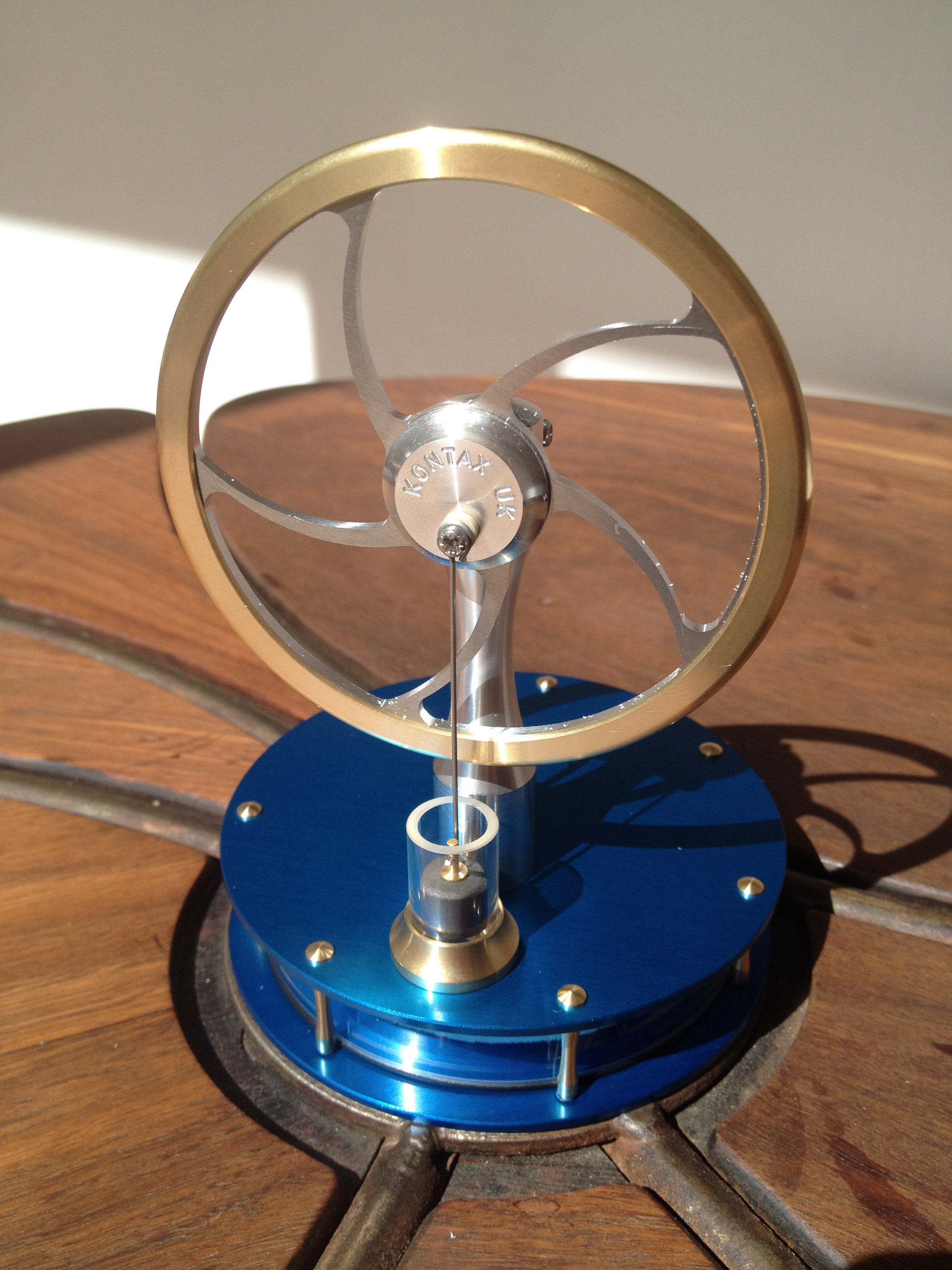Yesterday I received a long-awaited package from overseas: my first Stirling Engine! I became fascinated by them a few years ago, when I discovered this “long lost” invention from 1816 which I think when combined with modern materials and manufacturing could help us reclaim some of the wasted energy produced by todays myriad of heat-producing devices and machines around the home, office, industry, agriculture and even in space.
I’d always wondered why we couldn’t reclaim the heat from the back of a fridge for example. It’s energy isn’t it? But it turns out the problem is the potential energy is very low, because the temperature difference between the room and the heatsink is pretty small – not high enough to power most energy-producing devices. At the end of the day, even futuristic-sounding nuclear power stations are just big steam-engines which use radiation from uranium instead of coal – but they require lots of radiation.
This is where Stirling Engines come in. They run from a very small differential of heat between two plates (or a heat-source and a heat-sink). Of course a very low differential means there is only a small amount of energy – but there are hundreds of millions of fridges. It definitely all adds up.
Living in Sydney in an old sandstone cottage with a tin roof, I also am (literally) painfully aware of how extremely hot our attic gets, while the cellar is always cool. Surely this differential would be enough to – power the air con, or at least a fan to get the air moving passively. Air conditioning is one of the biggest “wasters” of energy and should be the target of a radical rethink. I firmly believe that rethink should involve a more holistic passive house design and incorporating stirling machines into the mix would add a unique hi/low tech advantage – with none of the usual disadvantages of human invention.
Stirling machines are very simple, use no fuel (except heat), need no lubricant, emit no pollution, make no noise, run for “ever” unattended, look beautiful and cool and inspiring… it’s pretty unbelievable isn’t it?
So what’s the catch? Well there’s no catch really, except perhaps it’s hard to make a really powerful one but that’s not their niche. I’ve just bought a book on how to build a 5HP model which can’t be sniffed at.
So here’s a video of me putting together my first kit:
Next – I’m thinking of building a ventilation pipe between my cellar and attic and using a stirling engine – powered by the 20-30′ heat difference – to help power fans to cool the upper house and dry the sub floor.
I’d also like to see how much power I can get from the back of my fridge and investigate the Seebeck and Peltier effects which are used in thermoelectrics to similarly generate power from heat differentials and shunt heat around.
But for the time being, I’m going to put my lovely brass flywheel’ed engine on something wastefully warm like my laptop charger at work, and use it to inspire and pass on the infectious Stirling fascination.

